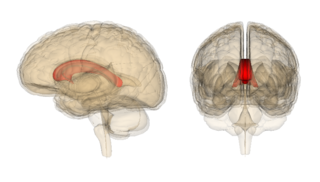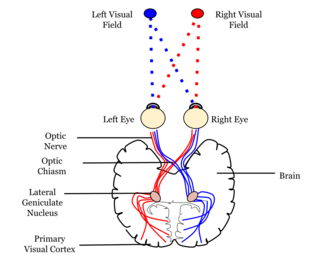At the fictional Hogwarts school for witchcraft and wizardry in the Harry Potter series, students are sorted into different school houses by a magic hat based on their personalities. Similarly, in elementary school, a teacher may have declared one side of your brain stronger than the other based on your personality. If you’re a creative or artistic type, you would have been identified as right-brained. If you’re an analytical or mathematical type, you would have been identified as left-brained.
You might have even used this picture of your brain to choose a college or a career. And while we each have a unique set of talents and abilities, there’s no such thing as right-brained or left-brained.
Not in the way your school teacher explained it to you, anyway. And if there were such a thing, almost all of us would be left-brained. The left cerebral hemisphere controls the right side of the body, and about 90 percent of people prefer to write with their right hand, indicating left brain motor dominance. Moreover, language skills are left lateralized, or largely controlled by the left hemisphere, in over 90 percent of people. That includes 78 percent of people who are not right-handed.
Does this mean that the remaining few with language in the right hemisphere are “right-brained?” More likely, these individuals have, on balance, the same skills and talents as the other 90 percent of us “left-brained” folks. The place in the brain where language is localized just happens to be different.
The left cerebral hemisphere is to the “right-brained” poet or novelist as the hamstrings and quadriceps are to a competitive sprinter. Because the ability to understand and produce language is focused in the left side of the brain in almost everyone, caricaturing these creative types as using their right brain more than their left brain is silly.
Similarly, visual-spatial abilities—localized to the right cerebral hemisphere—are skills that are absolutely critical for “left-brained” talents like science or engineering. The ability to interpret algebraic equations in terms of geometric curves is the specialty of the right brain.
So where did this right-left dichotomy come from? As mentioned above, some skills are indeed strongly lateralized to one hemisphere of the brain. But much of our obsession with the brain’s left and right cerebral hemispheres may have started with studies of split brain patients in the ‘50s. During this time, people who suffered multiple seizures a day underwent intense surgery to treat their epilepsy.

To calm the electrical storms that ravaged these patients’ brains, the nerve fibers connecting the left and right hemispheres of the brain were cut. These fibers are collectively known as the corpus callosum. As a once bright highway of information goes quiet, consciousness changes in profound ways, and the specialties of each cerebral hemisphere are more easily disentangled.
Once the corpus callosum is severed on the operating table, the new split brain patient appears astonishingly normal at first glance. But careful experiments reveal that this person is really two persons, two streams of consciousness in one body. These experiments, performed by Nobel laureate Roger Sperry, found clever ways of feeding information to only one side of the body (and, therefore, only the cerebral hemisphere controlling that side of the body).
In one experiment, the right hemisphere was shown an image of a snow scene while the left hemisphere was shown a picture of a chicken. The right hemisphere was then instructed to select an image of an object to match the presented scene. After selecting an appropriate object—a snow shovel—the split brain patient is asked to justify this selection. Remember, only the left hemisphere, which only saw the chicken, can speak. Because only the left hemisphere can speak, the patient would give a response such as ‘I can use this to shovel out the chicken coop.’

Why did the left hemisphere give this answer? Not being able to see the snow scene, the left hemisphere doesn't know that the shovel was selected to shovel snow. Thus, this separate stream of consciousness invents a new reason involving the chicken scene that it can see.
The right hemisphere cannot speak, but it can point to words like “yes” or “no” to answer a question. Neurologist V. S. Ramachandran tells an anecdote of a split brain patient asked whether he believed in God. The right hemisphere pointed to “yes” while the left hemisphere declared “no.” Each hemisphere, it seems, maintains independent beliefs and personalities, challenging the notion that we are each an indivisible “self.”
But this does not justify the pop psychology concept of “left-brained” or “right-brained.” The two hemispheres are different, yet brain imaging technologies like functional magnetic resonance imaging (fMRI) suggest that, on average, we use both sides of our brain equally. We are all “brain-ambidextrous.”
If ever there were a left-brained and a right-brained person, it would be the two personalities cohabiting the skull of a split brain patient. For the rest of us, these labels are as fictional as Harry Potter.
Oh, and that thing about only using ten percent of your brain? You can throw that one in the garbage, too.
This post also appeared on Knowing Neurons and was the script for a video collaboration between Joel Frohlich and the Youtube channel Professor Dave Explains.
References
Nielsen, J. A., Zielinski, B. A., Ferguson, M. A., Lainhart, J. E., & Anderson, J. S. (2013). An evaluation of the left-brain vs. right-brain hypothesis with resting state functional connectivity magnetic resonance imaging. PloS one, 8(8), e71275.
Wimsweden. “Split brain with one half atheist and one half theist.” Online video clip. YouTube. Youtube, June 3, 2010. Web. February 8, 2018. https://youtu.be/PFJPtVRlI64
Gazzaniga, M. (2012). Who's in Charge?: Free Will and the Science of the Brain. Chapter 2: The Parallel and Distributed Brain. Hachette UK.
Harris, S. (2014). Waking up: A guide to spirituality without religion. Chapter 2: The Mystery of Consciousness. Simon and Schuster.





.jpg)


